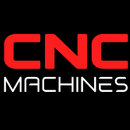Haas VM-2 vs. VF-2SSYT: Key Differences for CNC Machining Buyers

Haas VM-2 vs. VF-2SSYT: Key Differences for CNC Machining Buyers
When it comes to Haas vertical machining centers (VMCs), the VM-2 and the VF-2SSYT are two high-performance models designed for precision and productivity—but they serve slightly different machining needs. If you're deciding between these two popular Haas models, this detailed comparison will help you understand the key differences in build, spindle, accuracy, and best-use scenarios. Whether you're focused on mold work, high-speed aluminum machining, or tight-tolerance aerospace parts, this breakdown will guide your purchase.
Overview: VM-2 vs. VF-2SSYT
| Feature | Haas VM-2 | Haas VF-2SSYT |
|---|---|---|
| Application Focus | High-precision mold/tool work | High-speed, high-volume machining |
| Travel (X/Y/Z) | 30" x 20" x 20" | 30" x 20" x 20" (YT = extended Y-axis) |
| Spindle Speed | 12,000 RPM (inline) | 12,000 RPM (inline, SS = Super Speed) |
| Rapid Traverse | 710 IPM | 1,400 IPM |
| Tool Changer | 30+1 side mount | 30+1 side mount (faster ATC) |
| Accuracy | Higher standard for surface finish | Optimized for speed and throughput |
| Base Price (approx.) | ~$100,000+ | ~$70,000+ |
1. Application Differences
Haas VM-2: Precision Mold & Die Machining
The VM-2 (Vertical Mold) is part of Haas's VM Series, built for shops that require high surface finish, tight tolerances, and rigidity for tool/die work, aerospace components, or 3D contouring.
- Ideal for moldmakers, aerospace, and medical device manufacturers.
- Prioritizes repeatability and fine finish accuracy over raw speed.
- Incorporates precision linear guides and tighter machine tolerances.
Haas VF-2SSYT: High-Speed, High-Throughput Machining
The VF-2SSYT (Super Speed Y-Axis Travel) belongs to the VF Series, designed for general-purpose machining with a performance boost. The SS designation brings faster spindles, rapid motion, and quicker tool changes.
- Best for production shops, job shops, or automotive environments.
- Designed for aluminum, mild steel, and high-speed multi-axis machining cycles.
- YT = Extended Y-axis travel for slightly larger part setups (20” vs. standard 16”).
2. Spindle and Speed Performance
VM-2 Spindle
- 12,000 RPM, inline direct-drive
- Built for smooth tool engagement, lower vibration, and reduced thermal expansion
- Emphasis on consistency over speed
VF-2SSYT Spindle
- 12,000 RPM, inline direct-drive
- Super-Speed package includes faster acceleration and rigid tapping at higher RPMs
- Excellent for light metal machining and high chip evacuation
Winner for Speed: VF-2SSYT
Winner for Precision: VM-2
3. Tool Changer & Automation
VM-2
- Comes with a 24+1 side-mount tool changer
- Tool changes are efficient, but not optimized for ultra-high-speed cycling
VF-2SSYT
- Features a 30+1 high-speed side-mount tool changer
- Delivers ultra-fast tool changes to maximize spindle uptime
If you're prioritizing lights-out machining and high cycle counts, the VF-2SSYT provides a speed edge.
For tight-tolerance custom work, the VM-2 offers the stability you need.
4. Accuracy and Surface Finish
VM-2
- Comes standard with precision ground ballscrews, enhanced linear guides, and tight factory alignments
- Ideal for tool paths involving fine detailing or 3D surfacing
- Better dampening for long cycle finishing passes
VF-2SSYT
- Still accurate but designed for speed over ultra-fine detailing
- Perfectly capable of ±0.001” tolerances but may not hold ultra-fine finishes as consistently in mold-grade work
5. Machine Size, Footprint, and Work Envelope
Both machines have similar travel:
- X-Axis: 30 inches
- Y-Axis: 20 inches (in the VF-2SSYT; standard VF-2 is 16”)
- Z-Axis: 20 inches
VM-2
- Slightly more rigid frame
- Ideal for single-setup precision components
VF-2SSYT
- Lighter, faster construction
- Allows larger setups or fixturing due to extra Y-axis travel
6. Which CNC Machine Should You Choose?
Choose the Haas VM-2 if:
- You machine molds, dies, or aerospace components
- Your parts require tight surface finishes and ultra-fine tolerances
- Speed is less important than repeatability and rigidity
Choose the Haas VF-2SSYT if:
- You’re focused on production machining and fast turnaround
- Your work involves light to medium metals, particularly aluminum or mild steel
- You value shorter cycle times and faster tool changes


